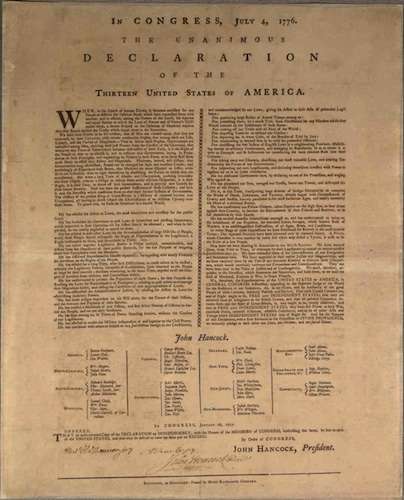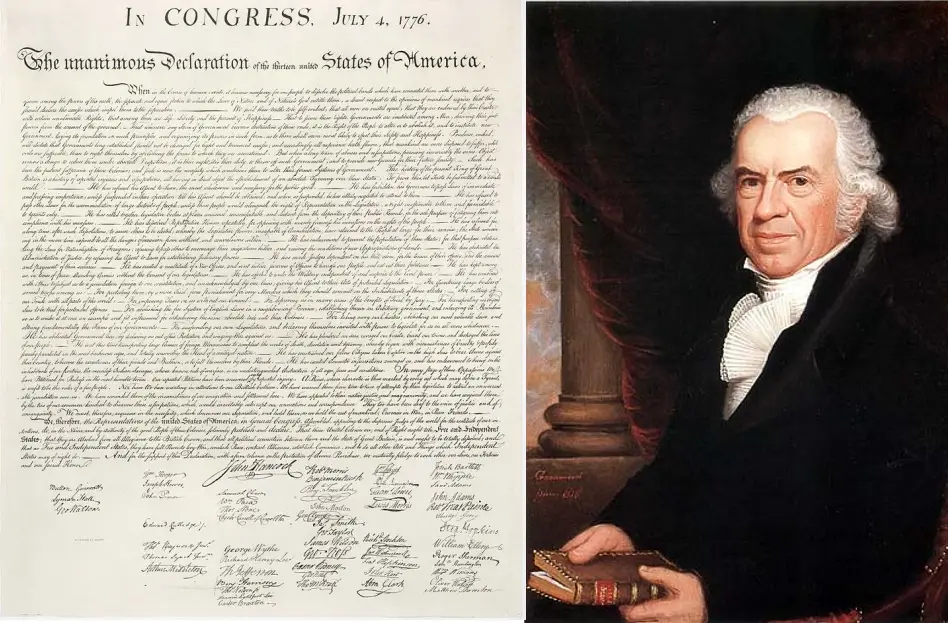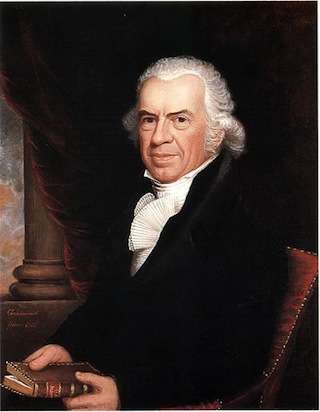Isaiah Thomas, America’s first great publisher, spent several years during the American Revolution just scraping to get by.
Thomas’s years of struggle were brightened by one glorious moment, when he read the Declaration of Independence on the steps of South Church in Worcester, Mass.
Isaiah Thomas
Isaiah Thomas was born in Boston on Jan. 19, 1749 (N.S. Jan. 30, 1750). He was apprenticed at age six to Zachariah Fowle. In 1770 he started the wildly radical Massachusetts Spy, a weekly newspaper described as “rabid, yellow and very successful.” His high-minded motto of “Open to all parties, but influenced by none,” described an impartiality he couldn’t sustain. Soon the Spy supported the cause of American liberty and it quickly got under Loyalist skin.

Front page of the Spy, July 7, 1774
He was hanged in effigy in North Carolina, wrote Marcus McCorison.
The British troops in Boston paraded before the Spy office and threatened Thomas with a tarring. By 1773 he was fully involved in the radical cause. In his autobiographical notes he stated that he secretly printed handbills at night for the Sons of Liberty. Thomas established a schedule of post riders to the south for the delivery of the Spy and other papers…

Thomas Hutchinson in 1750.
Massachusetts Gov. Thomas Hutchinson ordered the attorney general to prosecute Thomas. But the grand jury found no cause for indictment.
Flight
By April 1775, armed conflict seemed inevitable. Thomas learned British commander Gen. Thomas Gage planned to seize his press and arrest him for treason. On April 16, 1775, three days before war broke out, Isaiah Thomas fled Boston. He hurriedly packed his press, his fonts of type and his scarce paper and got ready to leave.
The next night, he smuggled his equipment out of Boston with the help of Gen. Joseph Warren and Col. Timothy Bigelow. They ferried him across the Charles River to Charlestown in the dead of night. He then packed his press and his supplies to Worcester. Two days later, he fought as a minuteman — “engages in the fight,” writes his grandson, without specifying. He at least watched the skirmishes and then published the first eyewitness account of them. Post riders rode throughout the colonies with his report to spread the word.
Put Him to the Sword
In September, a circular letter went to British officers telling them to execute Thomas and other patriots, including Sam Adams and John Hancock. Under the list of names, the instructions read “to put the above persons to the sword, destroy their houses and plunder their effects.”
But for Thomas, the American Revolution proved less drama and more a grind. He had little money. His two apprentices slept on printers’ rags in a garret. All three frequently dined on bread and milk in the printer’s office.
In the spring of 1776, Thomas leased his press and newspaper to two other printers. He went to Salem, Mass., to try to make a living. But Loyalists attached his press and type and he had to sell them to pay his debts. He moved his family to Londonderry, N.H.
“They must have been dark years,” wrote his grandson and biographer Benjamin Franklin Thomas. “Somehow he got through them and supported his family.”
The Declaration of Independence

Declaration of Independence
During those years, Isaiah Thomas had one bright day. On July 24, 1776, he read the Declaration of Independence, the first in Massachusetts to do so.
The stage from Philadelphia stopped in Worcester on its way to Boston with the news. Thomas stood on the steps of the South Church and read the declaration to the entire population of Worcester and adjoining towns.
“The declaration was received with every demonstration of joy and confidence,” wrote his grandson.
The King’s arms on the courthouse were burned to ashes. The sign was taken off the King’s Arms tavern, and the townsfolk celebrated inside with 21 patriotic toasts. They gave full vent to their patriotic feelings and were surprised to find the next morning that a dozen of them had joined the Continental Army – including Isaiah Thomas’s apprentice. Thomas got him excused on the grounds he was less than 16 years old.
In the spring of 1778, Isaiah Thomas resumed printing the Spy. He would remain in Worcester, printing until the end of his life. He would also found the American Antiquarian Society and achieve his life’s major goal: publish a history of the printing industry.
Isaiah Thomas died on April 4, 1831.
This story last updated in 2022.
Images: Spy Revere, P. (1774) Masthead and part of front page of The Massachusetts spy, or, Thomas’s Boston journal showing a female figure of Liberty in upper left and rattlesnake labeled “Join or Die” symbolizing the 13 colonies, challenging a griffin, across the top. United States, 1774. July 7. [Photograph] Retrieved from the Library of Congress, https://www.loc.gov/item/2002712180/.


6 comments
Interesting article. Thank you.
[…] consideration, Moses and Phebe Dunbar joined the king’s army because they did not support the Declaration of Independence. Moses fled to Long Island, where he accepted an offer to become a captain in the king’s army. He […]
Thank you for this article. Isaiah Thomas is one of my favorite figures from American History. Please check the date on which he read the Declaration. July 24 seems too late. We know that he printed it in the Massachusetts Spy on July 17, and while I’m not sure of the date of his reading, It seems odd a public reading would be delayed until a week after it was published in the paper.
[…] Thomas is best known as a newspapermen and supporter of the American Revolution. But as a printer and publisher he did not limit himself to […]
[…] It was likely built in 1704 and first occupied by Hopestill Capen's dress goods business. In 1771, Isaiah Thomas published The Massachusetts Spy from the second floor. (Thomas later decamped to Worcester during […]
[…] it. Likely built in 1704, Hopestill Capen’s dress goods business first occupied it. In 1771, Isaiah Thomas published The Massachusetts Spy from the second floor. (Thomas later decamped to Worcester during […]
Comments are closed.